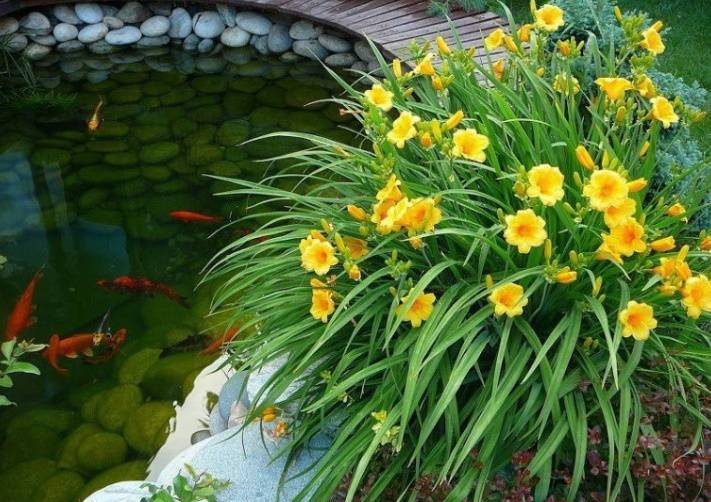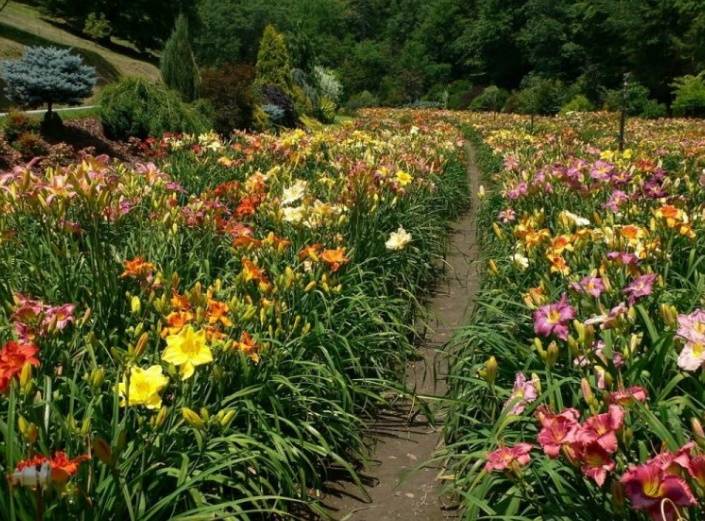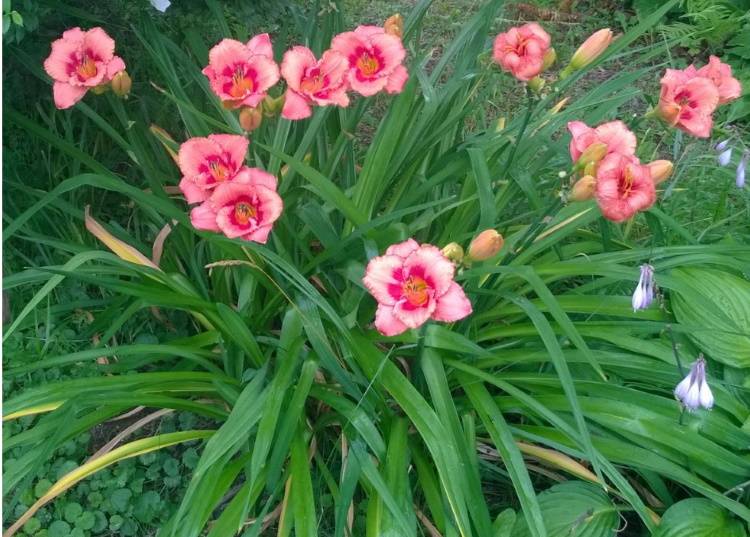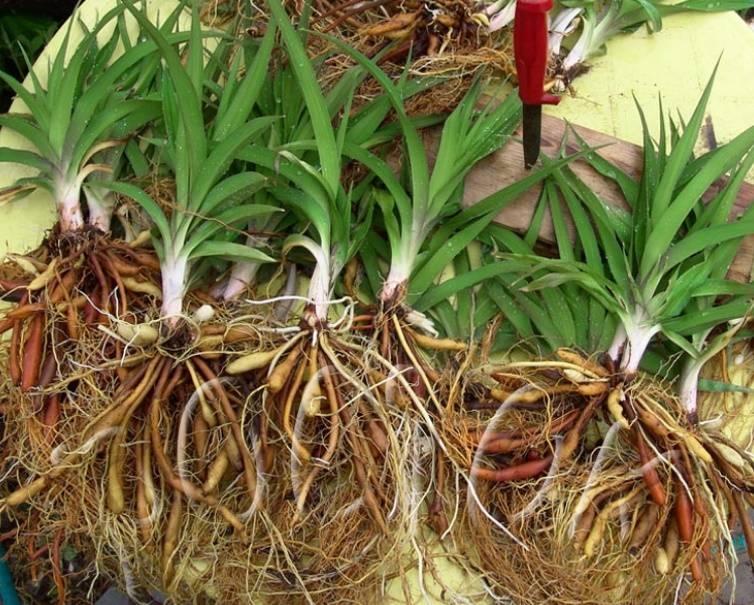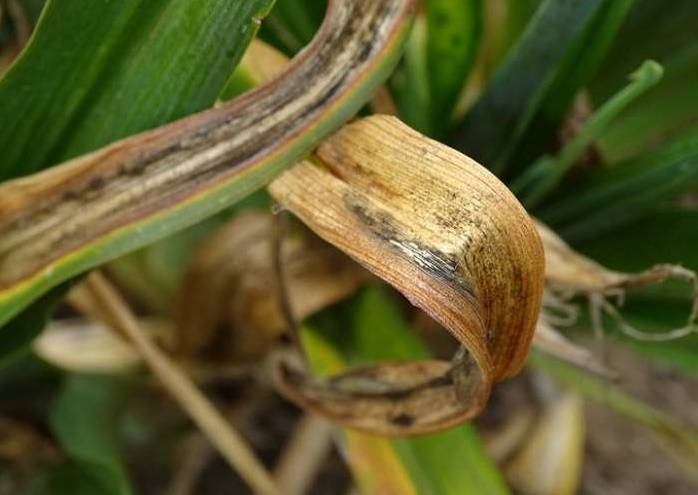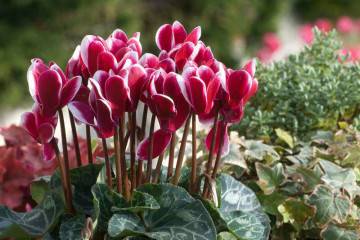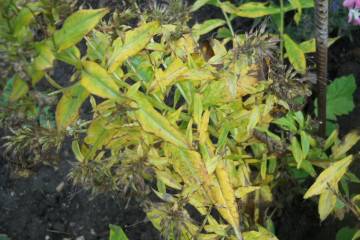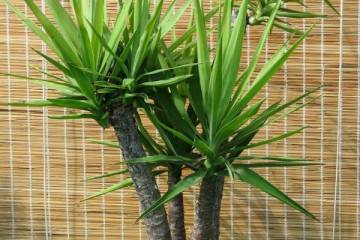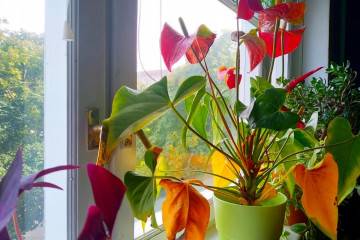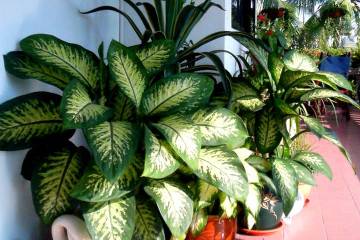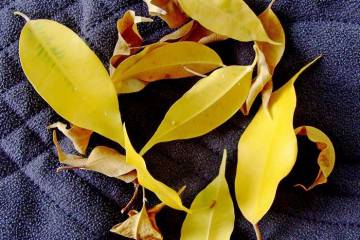Why do the leaves of the daylily turn yellow - what to do
Content:
Beautiful perennial flowers, known in Russia as daylilies, krasodnevy, hemerocalis, are loved all over the world. They are grown by professional florists and simple housewives. Daylilies decorate parks and household plots. Sometimes the leaves of plants begin to turn yellow, they look ugly, some bushes stop blooming, or even dry out altogether. The question arises: why do the leaves of the daylily turn yellow.
How to identify the problem
The wild species of daylilies in Europe have been known for almost 300 years, but only a little more than a century have been engaged in the selection of these plants. The first human-grown flower, Hemerocallis hybr. (hybrid daylily) was obtained and officially registered in England in 1892. Since then, breeders have grown over 80,000 new varieties of daylilies.
Daylilies are unpretentious plants with a dense flower crown, a beautiful leafy rosette in the form of a fan. Most of them do not require special care and cultivation conditions.
Only a few of the hybrids created in recent years by micropropagation are very moody. Flower growers have to select a certain soil composition for them, to withstand a special temperature and watering regime, so that at the next inspection of the bushes they do not think about why the leaves of the daylily turn yellow, what to do with the flower. Suppliers of elite hybrids report these nuances in the description of flowers during the sale of planting material.
Other plants from the genus Hemerocallis usually require:
- a well-lit place in a garden or flower bed;
- sufficiently fertile loose neutral or slightly acidic soil;
- when the soil dries up - irrigation with settled tap or spring water, warmed up to the ambient temperature;
- top dressing with nitrogen (with the addition of trace elements) fertilizers in the spring before the beginning of the growing season, potassium-phosphorus-nitrogen fertilizers - during budding and flowering, potassium-phosphorus fertilizers - in the fall after the end of flowering.
In order for the hemerocalis to always look elegant, they make sure that pests do not settle on them, so that the roots of the flowers do not rot. It is necessary to ensure that the plants do not suffer from fungal and viral infections, because daylily diseases are sometimes very difficult to overcome.
The reasons why the daylily turns yellow, what to do
The blossoming buds of Krasodnevs bloom for a very short time - from 16 to 24 hours. Not only in Russia, but also in other countries, plants bear names that emphasize the very short flowering period of their inflorescences: in England - Daylily, in Germany - Tuglily, and the scientific name of the genus Hemerocallis (beautiful one day) emphasizes this feature of daylilies.
Florists who do not seek to collect seeds in the summer, in order to ensure uninterrupted blooming of buds, have to cut off closed inflorescences and empty flower stalks. Therefore, it is most often possible to see the yellowed ends or small areas of hemerocalis leaves at the very initial stage of the problem.
In the spring, before flowering, when regular watering is not yet carried out, less attention is paid to plants.Therefore, some gardeners belatedly notice that the daylily has turned yellow, and do not know what to do with the plant further, what is the reason for the appearance of yellow leaves.
Excess or lack of moisture
One of the reasons for the appearance of yellow leaves on daylily fans is the constant excess of moisture in the soil. To prevent this from happening:
- When planting Hemerocallis, it is necessary to choose that piece of land where the soil water level is lower than 1m, because the thin roots of flowers penetrate to a depth of 50 cm.
- Watering should be carried out after the soil surface dries up in the root zone of the bush. It is believed that a layer of dry soil 3 cm thick signals that the flower needs to be watered.
Increased soil moisture during periods of air temperature drop below 18 ° C causes root rot, which also leads to yellow leaves. In addition, slugs settle on waterlogged soils in the root zone of Hemerocallis, which gnaw holes in the leaves and damage the buds.
Lack of moisture is the reason why the tips of the leaves of daylilies turn yellow. Drought is accompanied by changes in the cellular structure of daylilies, tugor (internal pressure) in plant tissues decreases, and thin suction root filaments die off.
Plant roots cannot supply food to the top of the leaves. Their cells begin to lose moisture, the processes of photosynthesis are inhibited in them, which ensure the color of the leaves in green.
Improper feeding
Seasonal feeding of daylilies with macronutrients is carried out according to the standard schedule for most plants:
- In the spring, when the fan of leaves is growing, nitrogen should prevail in the composition of fertilizers.
- In summer, during budding and flowering, large doses of phosphorus and potassium are used, nitrogen is used in very small quantities.
- In the fall, before wintering, the plants are fed with phosphorus-potassium fertilizers without the use of nitrogen.
In addition to macronutrients, plants need substances introduced under the roots in very small doses, but without which they cannot fully develop. The reason for the yellowing of the lower leaves of hemerocalis is often a magnesium deficiency. Chlorosis with a lack of this trace element gradually spreads throughout the plant. The leaves become brittle, wrinkled, and necrotic areas appear along the edges. The inflorescence petals become pale.
Leaves may turn yellow due to soils that lack iron or boron. The situation can be corrected by analyzing the soil, and then introducing the missing elements. But more often than not, it is impossible to do the necessary research. Therefore, it will be correct to use complex fertilizers, which include trace elements.
Diseases of daylilies and the fight against them
In the first place among the diseases affecting Hemerocallis are fungal infections. Very often, daylilies suffer from the spores of Aureobasidium microstictum, which cause striped leaves - Leaf Streak disease. Symptoms of the lesion appear on the leaf in the form of a yellowed central vein, then reddish-brown spots, thin yellow stripes are formed. Damaged areas can join together, and infected leaves will eventually die without treatment.
Such plants are treated with fungicidal preparations and watered only at the root. When sprinkling, spores washed off the leaves, together with water, will quickly infect the entire area surrounding the bush.
To fight infections, Fitosporin M is used, which is diluted according to the instructions and the roots of infected bushes are watered with a solution, the fungicides Alerin, Ridomil Gold, Bordeaux mixture (1%). The same drugs are used to infect daylilies with fungal rust spores.
Daylilies can suffer from root rot. The disease is determined by the fact that yellowed, starting to fade plant bushes can be pulled out of the ground without much effort. In this case, the tops of the leaves and stems of the affected plant are cut, the roots of the plants are washed in a solution of laundry soap and treated with fungicides. The plant is transplanted to another place, previously treated with Fitosporin.
Pests
The roots of daylilies are very often eaten up by the larvae of the root onion mite, and thrips and aphids settle on the leaves, the daylily mosquito lays its eggs in the buds. For pest control, systemic insecticides are used. These drugs act on insects while they gnaw through the tissues of flowers, which already contain the active substance. They use drugs such as Aktara, Confidor, Commander, Zenit.
How to prevent yellowing and shrinkage
Growing healthy daylilies does not require a lot of time and money. Prevention is very simple. The main thing is to regularly monitor the appearance of plants and carry out top dressing and preventive treatment of the soil and bushes during the growing season and flowering. Water Hemerocallis as needed, avoiding waterlogging of the soil.
Daylilies with their flowering always delight the owners and guests of gardens and parks. The decorativeness of these plants is so high that a slight change in the color of the leaves does not always alert the gardener. But it should be remembered that a yellowed plant screams that it is bad, you need to remember this and take action in time.
